Many amateur chefs find it difficult to prepare a steak perfectly. The solution is to prepare it sous vide. This blog post covers the most important steps for preparing a perfect sous vide steak.
Anyone can prepare sous vide steak
The best way to cook a steak is sous vide . The outside of the meat will have a crispy, golden brown crust. The inside is juicy, full of flavor, and has an even pink color. Pair it with a matching red wine for the perfect pairing.
[product=sous-vide-kickstart-package]
This complete package includes a compact vacuum machine, a powerful sous vide stick and two rolls of vacuum bags.
[/product]
Everyone has tried preparing a tender steak sous vide at some point. They've probably come up with all sorts of variations: too rare, cold, bloody, or even tough. During the preparation process, stress can arise. The steak needs to be removed from the oven or pan in time. With traditional preparation, this takes seconds.
Furthermore, many people think the perfect steak can only be obtained in a restaurant. This isn't true. Not anymore, at least not recently. The reason for this is that everyone can now cook sous vide at home. This makes it possible to prepare the perfect steak at home, exactly how you like it. From dummy to Michelin-starred chef, everyone can now prepare steak perfectly with sous vide.
What do I need for the perfect steak?
To cook a steak sous vide, you'll obviously need a sous vide machine. The bags used in this blog post are special sous vide bags . If you want everything you need to cook sous vide at home, we've put together an all-in-one package for you. You can get started right away.
We can't wait for you to try sous vide. So I suggest you learn all about it here, then come back, and we'll make the most flavorful and stunning steak together. 🙂
[product=sous-vide-complete-package]
Start cooking healthier!
[/product]
Ingredients
- Steak
- Salty
- Black pepper
- Olive oil
- Fresh herbs such as thyme, rosemary or bay leaf
- Butter
How to prepare sous vide steak
Bring the steak to room temperature
Remove the steak from the refrigerator about 30 minutes before cooking. This increases the meat's core temperature, allowing the sous vide process to work more effectively.
Get everything ready
Take a pan or sous vide container and fill it with warm water. Set the sous vide appliance to the desired temperature (see table below) and let the water heat up.
Give it taste
Season the steak with salt and pepper. Place the steak in Souvy sous vide bags along with olive oil, thyme, or bay leaves.
Yarn
Place the sous vide bag in the water bath and set the timer correctly. The correct time is listed in the table at the bottom of this article. The correct temperature is shown in the table in the next paragraph. Once the timer goes off, remove the steak from the sous vide bag and pat it dry with a cloth or paper towel.
Baking
Heat a pan with oil and fry the steak briefly over high heat until lightly browned. Finally, add a knob of butter.
[product=cast iron skillet]
The Cast Iron Skillet retains heat excellently, distributes it evenly and forms a natural non-stick coating after seasoning.
[/product]
Serve
Serve immediately and enjoy the steak.
Go to the butcher!
Go to the butcher for a beautiful steak. The better the quality of the steak, the better the result! Place the airtight steak in a preheated water container. Don't have a vacuum sealer ? You can easily do this, as you can read here . Remove the steak when you're ready to enjoy it. Forget the time pressure and stress of preparing a steak. Forget checking the steak every minute to see if it's done. From now on, you can leave the steak in the sous vide container or pan until you're ready to enjoy it.
All that's left to do is brown the outside of the steak. You can quickly brown the steak in a scorching pan. Grilling on the barbecue is also an option. Sous vide is the easiest way to prepare a steak, yet the flavor is captivating. It's a way to prepare a steak that's flavorful, tender, juicy, and evenly colored. There's only one way to be convinced: taste it.
Preparation temperature
When sous vide cooking, the correct cooking temperature is crucial. Even a few degrees higher or lower can produce a different result. The image below, using a steak as an example, clearly illustrates the difference in color. To give a good example, we cooked steak sous vide at three temperatures: 51 degrees Celsius, 55 degrees Celsius, and 61 degrees Celsius. The type of steak is also important.
Below the image you can read which types of food can be prepared sous vide based on these cooking times and temperatures.
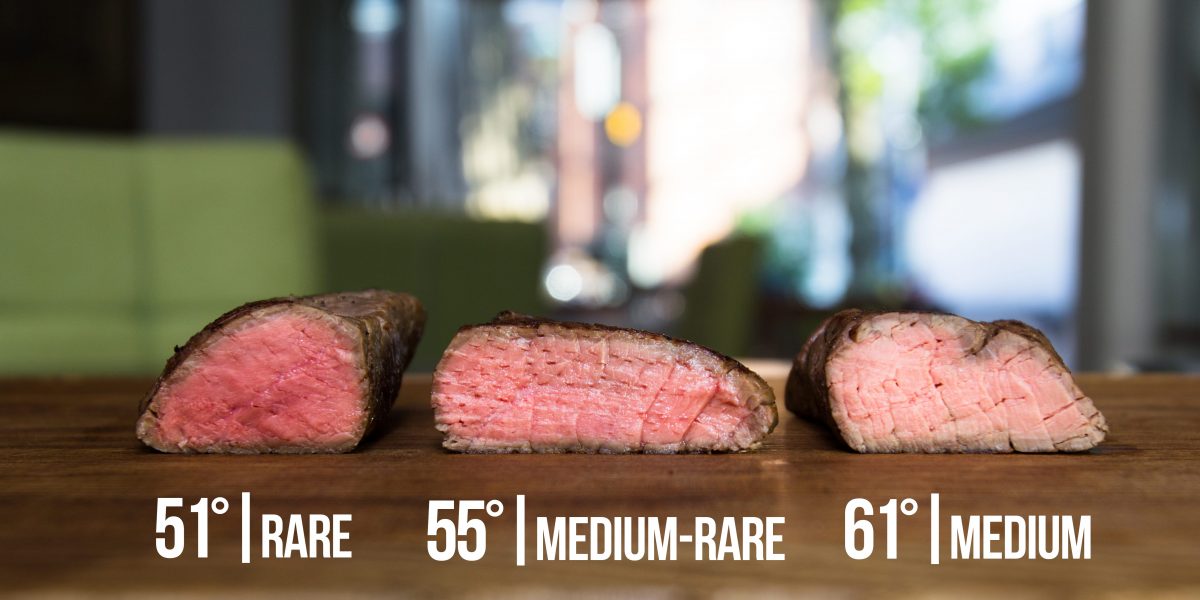
| Doneness | Celsius °C | Fahrenheit ºF |
| Rare | 50 – 52 °C | 122 – 125 °F |
| Medium rare | 53 – 58 °C | 127 – 136 °F |
| Medium | 59 – 63 °C | 138 – 145 °F |
| Medium well | 64 – 67 °C | 147 – 152 °F |
| Well done | 68°C + | 154 °F + |
[product=meat board]
Handy for cutting your steak
[/product]
[product=chef's knife]
Razor sharp, every time!
[/product]
Different types of steak
Each type of steak has its own distinct flavor and tenderness. To clarify which types of meat we're talking about, examples and explanations are provided below. This primarily concerns the following beef cuts:
Tenderloin
Tenderloin is considered the softest and most tender cut of beef. This cut runs along the back and the loin. When the tenderloin is attached to the vertebra at the same time as the loin, it's also called a T-bone. This is because the vertebra is shaped like a "T."
(Bull)steak
Beef steak is the general term for tender, lean muscle meat. The name comes from the English term " beefsteak " and comes in many variations. However, when you order it from the butcher, it's primarily cut from the thickest parts of the topside. The round steak is cut from a portion of the topside and the muscle (the buttock) of the beef. The tenderness of the steak is determined by several factors, including the breed, age, and sex of the animal. Furthermore, aging plays a significant role in the quality of the meat.
Entrecote
The entrecote comes from the tenderloin and is recognizable by its shape and the rim of fat. This fat is attached to the meat and releases flavor when cooked. So leave it on! The entrecote is slightly firmer than the tournedos and has a bit more flavor.
Ribeye
The ribeye comes from the same cut as the sirloin steak. The ribeye has a thin layer of fat that extends through the meat. The name ribeye comes from the fact that, with a little imagination, the fat in the meat resembles an eye. A large piece of sirloin steak or ribeye is also called a Côte de Boeuf . Discover the ribeye sous vide recipe here.
T-bone
The so-called T-bone steak is the cut of meat between the ribs, like a sirloin steak, but with the bone in. This means there's another piece of meat attached, namely the tenderloin. It's an ideal cut for true meat lovers because it contains two different steaks: tenderloin and sirloin. 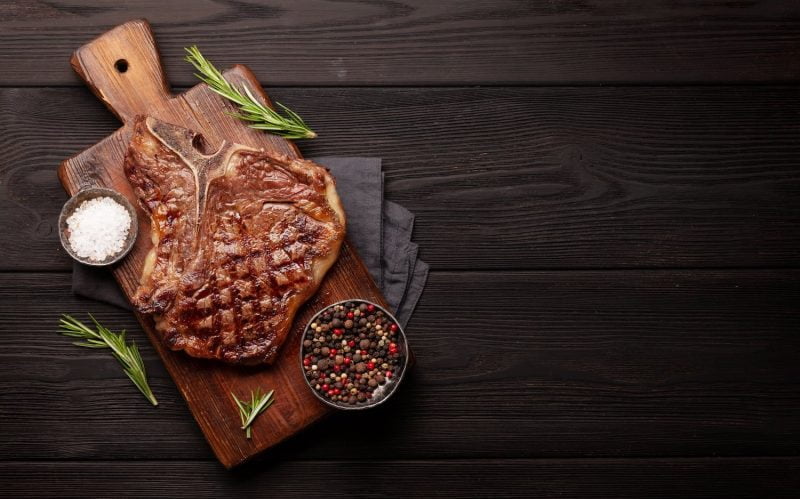
Succade
For a long time, it was thought that brisket was just for stewing. Nothing could be further from the truth. Brisket is cut from the shoulder. A large tendon runs through the meat. This type of meat has a distinctive flavor and texture. This makes this steak definitely worth trying! Curious about sous vide stew? Then take a look at the sous vide stew recipe.
Bavette
An increasingly popular cut of beef is the bavette . This cut comes from the so-called vang ( flank) and is also called the vanglap (flank steak ). It's a working piece of meat from the underside of the beef. The texture is coarser but exceptionally flavorful. Bavette is also called a vinkenlap ( finch steak) and flank steak . A cut of meat with many names!
Tailpiece
A relatively unknown cut of meat in the Netherlands is the Picanha. This is also called the rump piece . It is recognizable by its triangular shape and the distinctly creamy-white layer of fat. The meat is located on the back above the tail, hence the name rump piece .
Jew tenderloin
The shoulder tenderloin, or "jew's tenderloin ," is the cut of meat between the shoulders of the cow. The "jew's tenderloin" gets its name because, due to dietary laws, Jews are not allowed to eat meat from the hind leg. The "jew's tenderloin" is located at the front of the cow, so it is permissible to eat. See the sous vide "jew's tenderloin" recipe here.
Tenderloin
The tenderloin gets its name from the muscle that makes the lungs move. The tenderloin runs along the midriff of the cow. This cut of meat is also becoming more popular in the Netherlands, while it has been on the menus of French bistros for years. It is also called the onglet .
Maillaird reaction
Meat also requires finishing touches after sous vide cooking. Because the meat is cooked slowly, it partially misses the well-known Maillard reaction that occurs when frying meat. The lower the cooking temperature, the slower the reaction. In short: the Maillard reaction does occur at lower cooking temperatures, but to a lesser extent.
The solution is simple: after sous vide cooking, briefly fry over high heat. This creates that pleasant, recognizable baked flavor! This reaction occurs when something is heated to create a crispy crust or a roasted flavor. The three key elements for this reaction are:
- Sugars
- Amino acids
- Heating
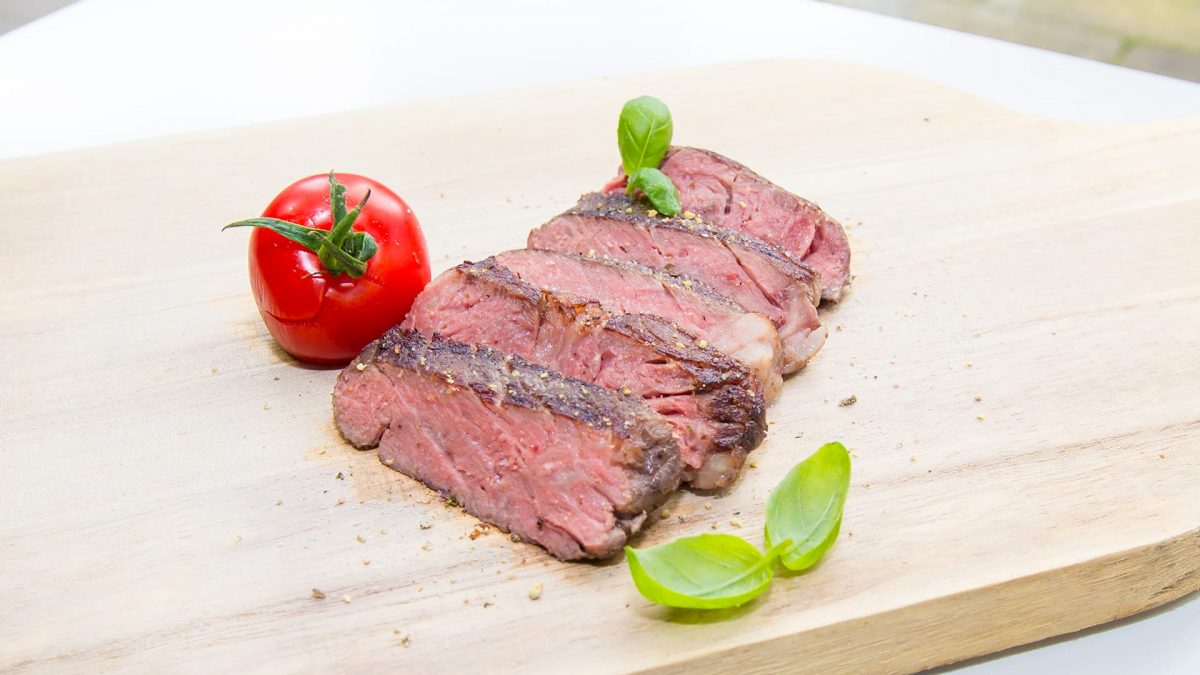
How exactly does it work?
In a Maillard reaction, the sugars in the meat impart that specific aroma and flavor to roasted meat. There are several ways to create this reaction, such as briefly pan-frying or searing the meat.
There are several ways to give your steak that crispy, golden-brown exterior. Depending on which method you choose, you can determine whether you season the steak with salt and pepper beforehand or afterward. You'll see when this should be done beforehand or afterward in the next paragraph. Some ways to give your steak that crispy exterior are:
- Baking
- Roasting
- Grilling
- Frying
Frying steak in the pan
The most common way to cook a steak is in a pan . This can be done before or after the meat is cooked sous vide. Season the steak generously with salt and pepper beforehand. Then preheat the pan with oil, such as sunflower, peanut, or olive oil. Sear the steak briefly in the pan, ensuring it develops a golden brown crust. This takes less than a minute per side. Remove from the pan, place the steak on a warm plate, and serve immediately.
[product=frying pan set non-stick coating without lid]
This set contains three frying pans, each with a high-quality Teflon® Platinum Plus non-stick coating.
[/product]
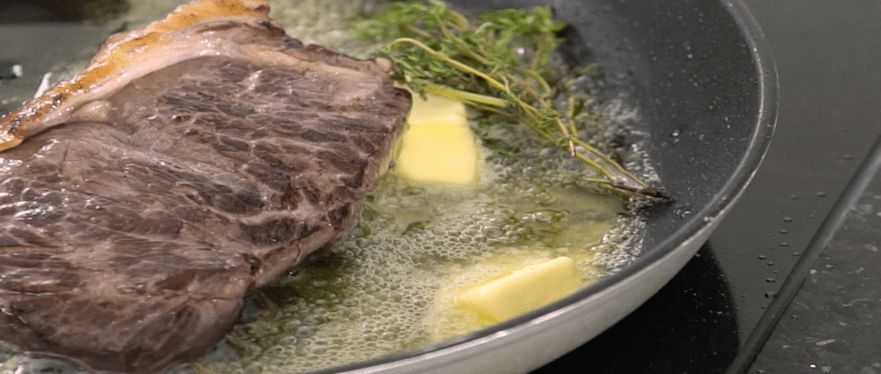
Roasting in the oven
Preheat the oven to 250°C (480°F). Season the steak generously with salt and pepper. Place it on a rack in the oven for about three to four minutes. Then remove, let it rest, and serve immediately.
[product=heat-resistant-oven-gloves]
These gloves are precision engineered to protect you from heat up to an incredible 250˚C.
[/product]
Grilling
You can grill in a grill pan or on a barbecue . Make sure the grill is piping hot, as you only want to give the steak that golden brown crust, not overcook it. Grill the steak for about 1 minute and then flip it. A big advantage of charcoal from the barbecue is the beautiful grill marks and smoky flavor. Remove it from the grill and place it on a warm plate or serve immediately.
cast iron grill pan
Looking for a grill pan that cooks your food perfectly and will last for years? A cast iron grill pan is the perfect choice for those who love perfectly grilled meat and vegetables.
[/product]
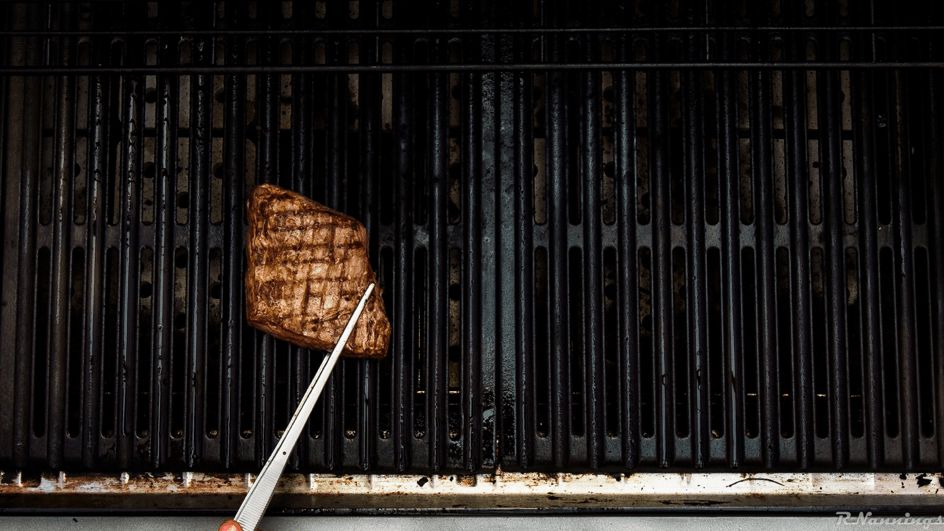
Frying
Yes, seriously, deep-frying. When deep-frying, it's important to season the steak only afterward. Because the fryer is very hot, the pepper will burn immediately if it's added beforehand. Set the deep fryer to 200°C (400°F). Pat the steak dry before frying and then lower it into the oil. The steak should fry for about 1 to 2 minutes. Remove it from the fryer and place it on a warm plate. Season the steak and serve immediately.
Salt before or after?
There are many stories circulating about whether meat should be seasoned with salt before or after cooking. Chefs and cooks often have differing opinions on the matter. It's a fact that salt can alter the texture of meat. This is a matter of time, because the longer the meat is exposed to salt, the more its texture changes.
When cooking a steak sous vide, it doesn't matter whether the meat is salted beforehand or afterward. So you can choose to salt it beforehand or afterward. It works perfectly either way.
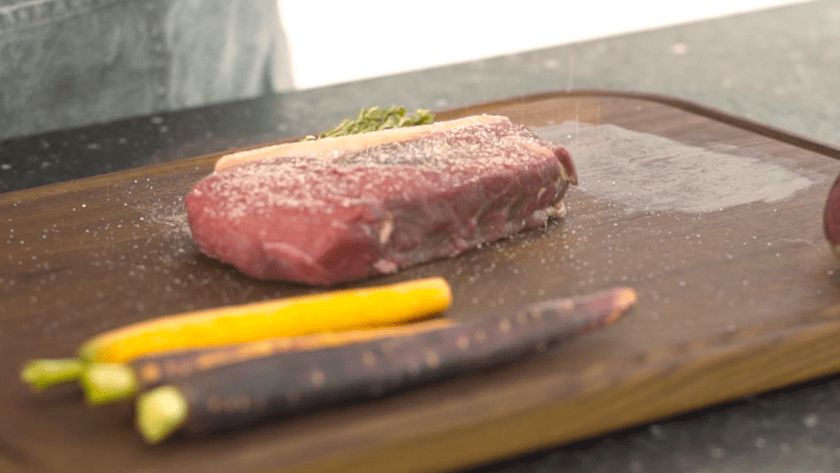
Preparation time for a steak sous vide
To determine how long to cook a steak sous vide, you need to know the thickness of the meat. Take a ruler or tape measure and measure the meat. This table primarily focuses on the minimum time a steak should be in the water bath.
Just because a steak is twice as thick as a certain thickness in the table below doesn't mean the minimum cooking time is also twice as long. As the thickness of the meat increases, it takes exponentially longer to reach the core of the meat and heat it through. A 1-inch thick steak is ready after 60 minutes, but can stay in the water bath for an hour longer without cooking further. That's the beauty of sous vide cooking . While the steak is being cooked sous vide, you have the opportunity to prepare the rest of the dish. See the table below for all the thickness guidelines.
| Thickness in centimeters | Thickness in inches | Duration in minutes |
| 0.60 | 0.25 | 23 |
| 1.25 | 0.5 | 31 |
| 2.5 | 1 | 60 |
| 5 | 2 | 173 |
| 7.5 | 3 | 354 |
Sous vide steak recipes
For the recipes below, you'll definitely need a sous vide appliance. Browse our selection of the best sous vide appliances here . Or check out one of the sous vide steak recipes below:
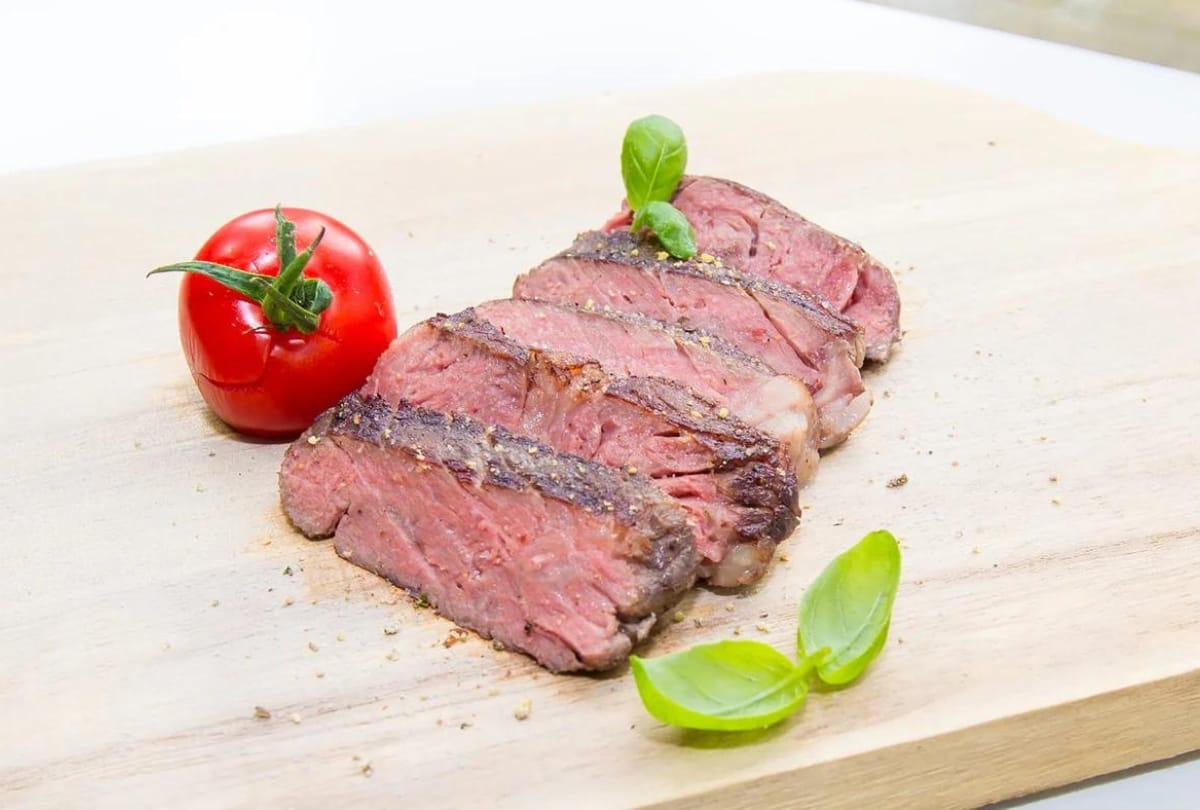
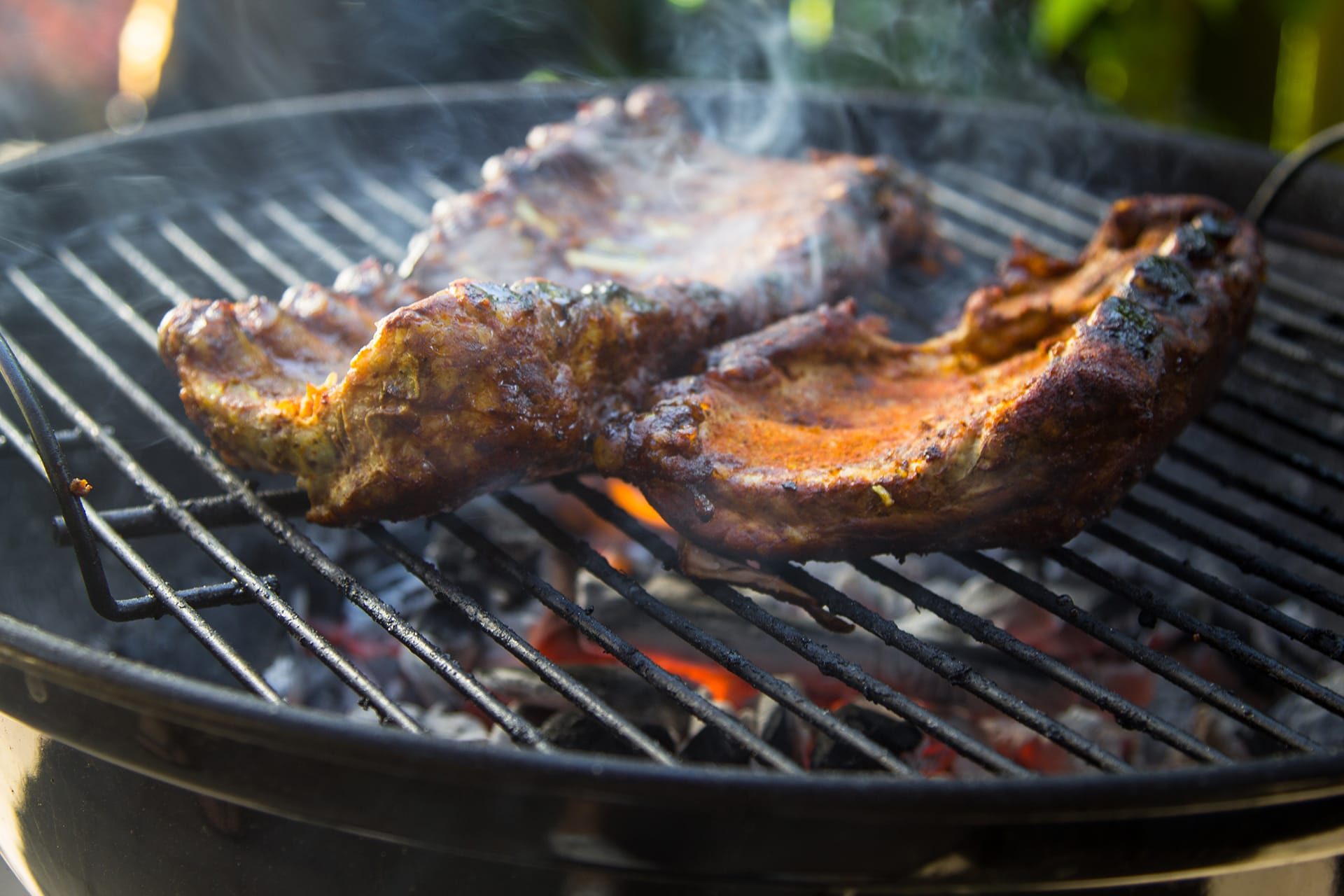

46 comments
Ronald
Hallo
Wat te doen als je een rear en een medium of een welldone wilt serveren ?
Greetz
yu-givan@hotmail.com
Hi Martin,
Je zou onze vacuumzakken met vochtstrip kunnen uitproberen!
Goudriaanroest@yahoo.com
Soms heb ik producten waarbij de zakken sterk opbollen in de sous vide en gaan drijven tijdens de bereiding. De lucht is niet goed voor de warmte overdracht. Is dat tegen te gaan?
yu-givan@hotmail.com
Hi Minjauw,
Bij sous vide is het vrij simpel, als je de kern 50 graden wilt hebben moet het ingesteld worden op 50 graden. Vervolgens terugkoelen in een koud bad en een paar minuutjes op hoog vuur afbakken bij service.
Minjauw.k@gmail.com
Hallo,hoe zouden jullie het aanpakken in een restaurant,stel ik gaar mijn rib eye voor in mise en place in de steamer .op welke temperatuur het best om kern 50 te hebben .dan sous ik hem in een koud waterbad steken. In service is dan pan goed heet laten komen en tot de juiste cuisson.wat is jullie advies.
Leave a comment
This site is protected by hCaptcha and the hCaptcha Privacy Policy and Terms of Service apply.